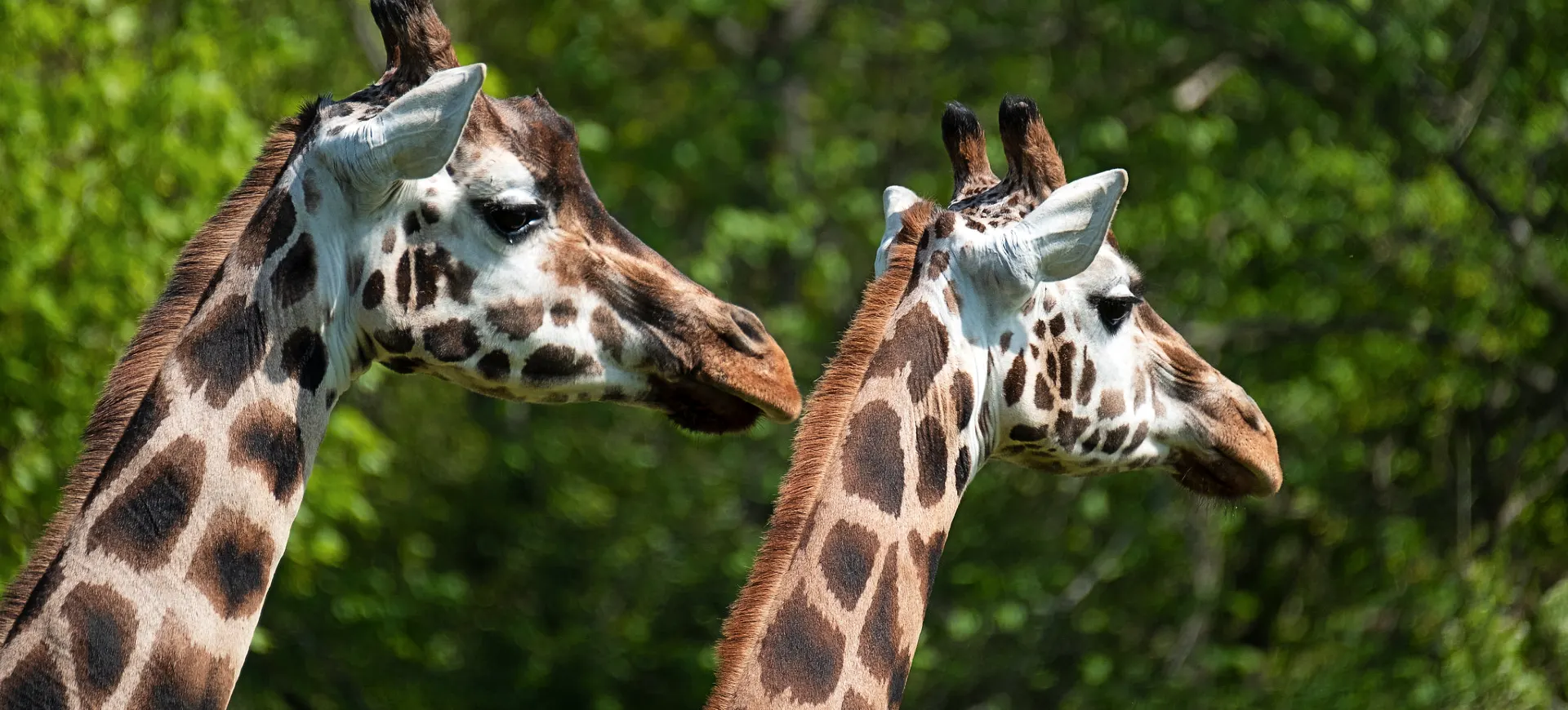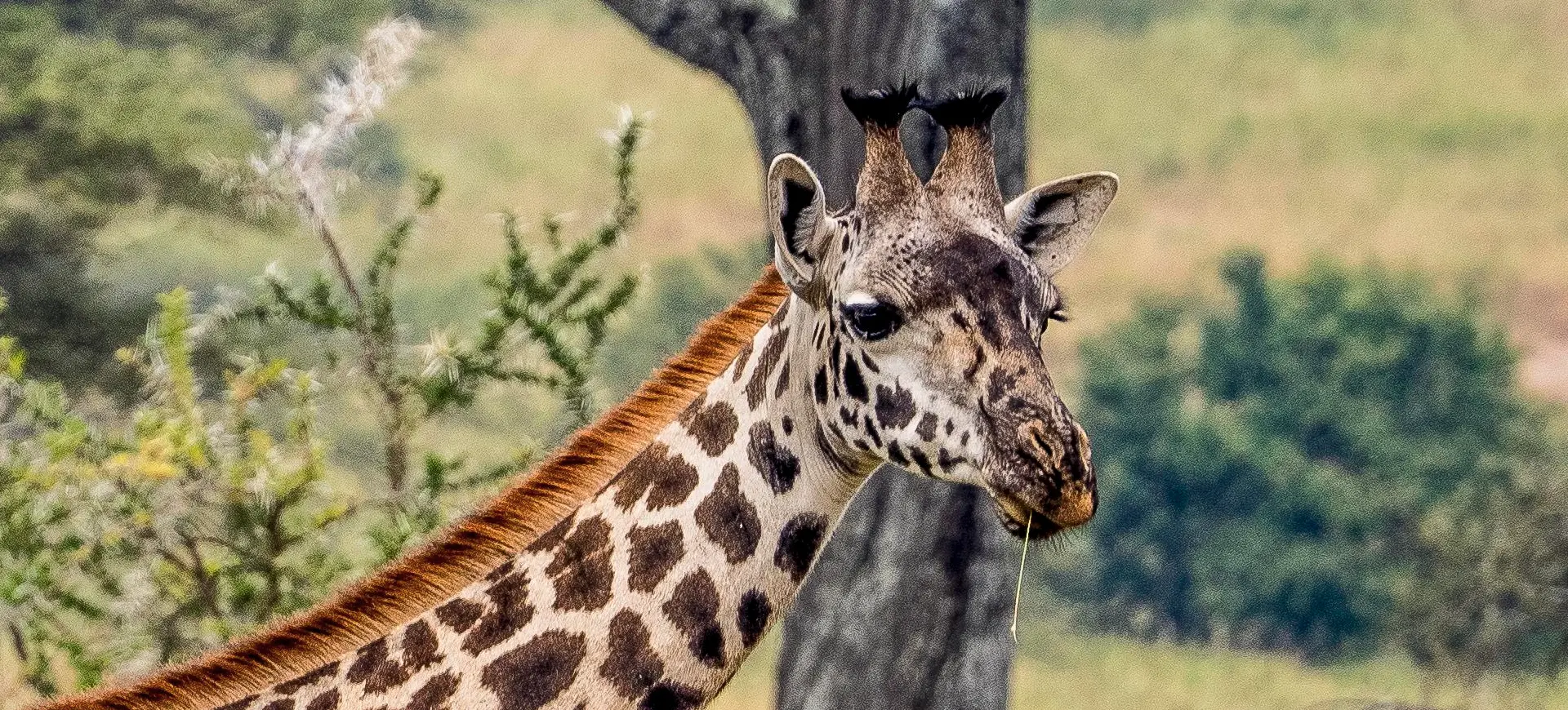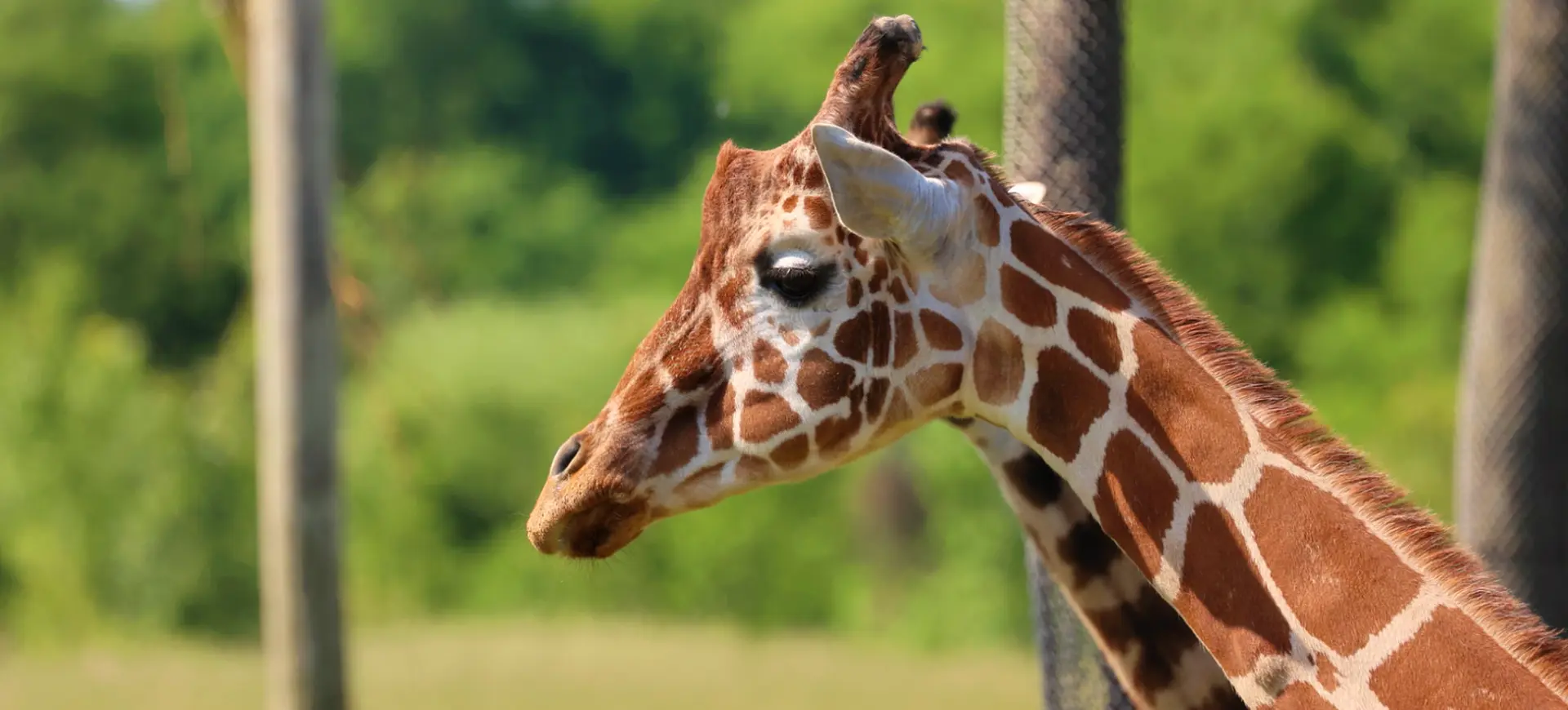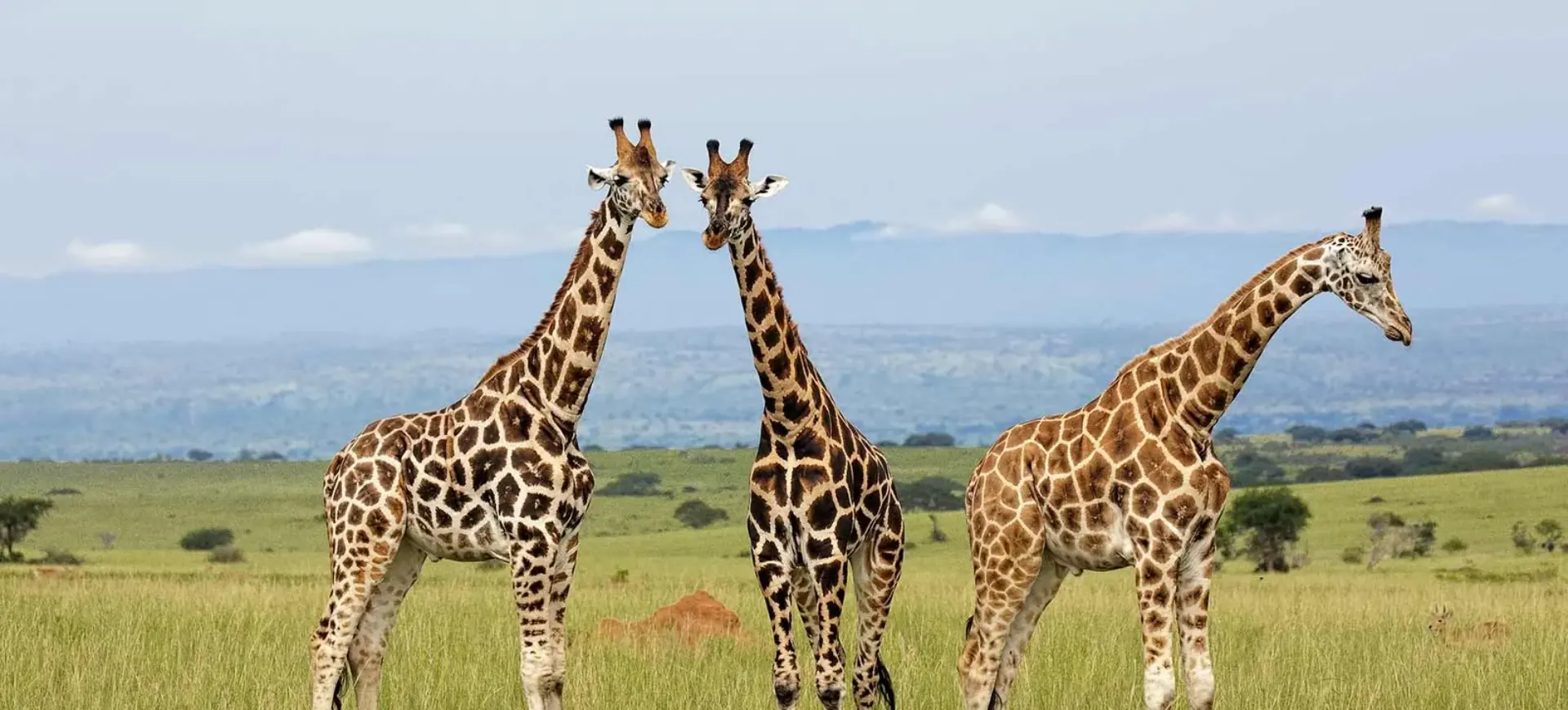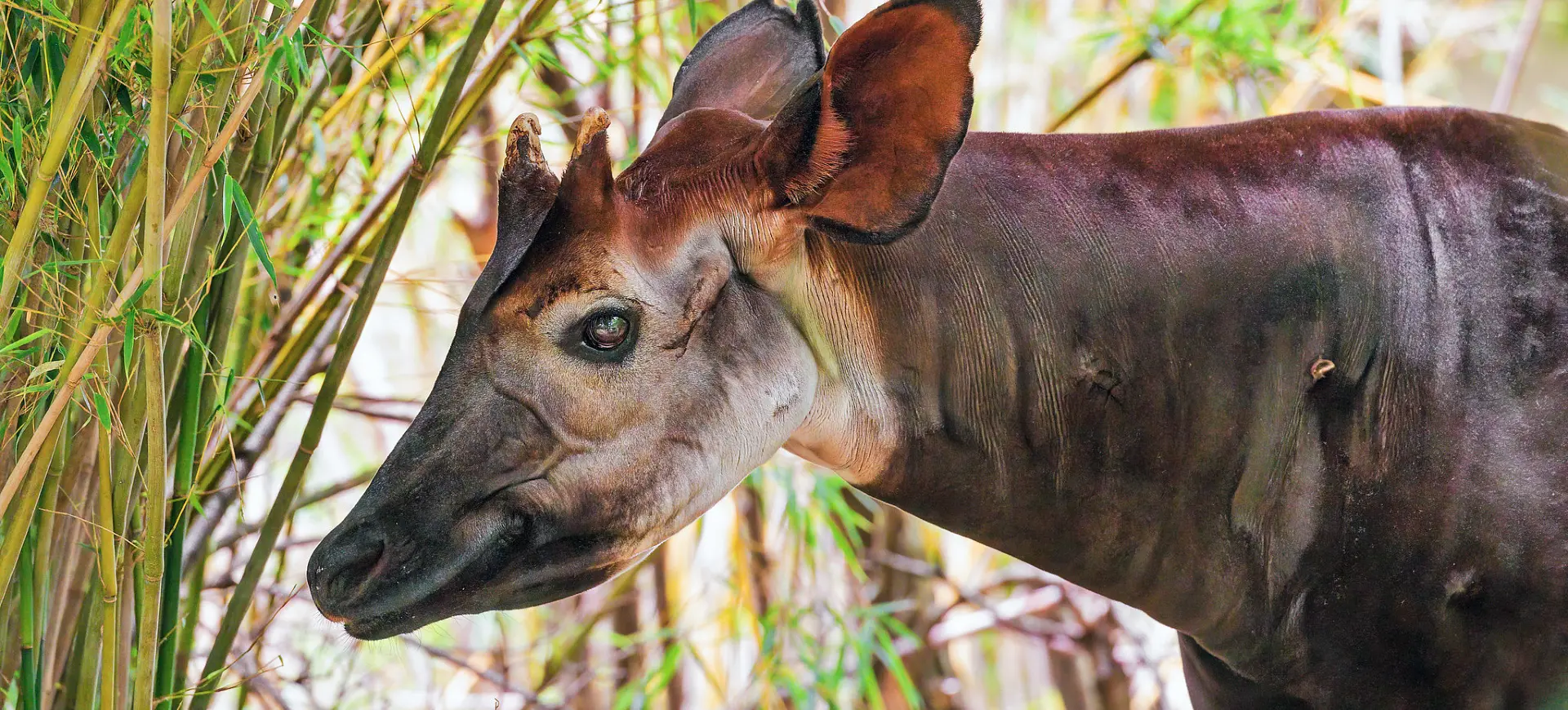Overview
The Giraffe, scientifically known as Giraffa camelopardalis, is the world’s tallest mammal, renowned for its long neck and legs and distinctive spotted coat. Native to Africa, giraffes are found primarily in savanna and woodland areas. Their extraordinary height, which can reach 18 feet, allows them to access leaves and buds in treetops that few other animals can reach, making them a unique part of their ecosystem. These gentle giants have a slow-paced gait, walking with both right legs moving together and then both left, which is unique among mammals.
Giraffes are social animals, typically seen in loose, open herds that can vary in size. These groups often include females and their young, while males may form bachelor groups or roam alone. Their social interactions are gentle and may include neck-rubbing as a form of bonding. Giraffes do not have a specific mating season and can reproduce year-round. The species is known for its quiet nature, as they communicate through infrasonic sounds below the range of human hearing.
Giraffes have a diverse diet, predominantly feeding on leaves, fruits, and flowers of woody plants, with the acacia tree being a favorite. Their long necks and prehensile tongues, up to 20 inches long, aid in foraging at heights inaccessible to other herbivores. These animals are ruminants, having a four-chambered stomach that aids in digesting the tough plant material they consume.
Taxonomy
Kingdom
Phylum
Class
Order
Family
Genus
Species
Sub Species
- Giraffa camelopardalis angolensis
- Giraffa camelopardalis antiquorum
- Giraffa camelopardalis camelopardalis
- Giraffa camelopardalis giraffa
- Giraffa camelopardalis hornicrofti
- Giraffa camelopardalis peralta
- Giraffa camelopardalis reticulata
- Giraffa camelopardalis rothschildi
- Giraffa camelopardalis tippelskirchi
Type
Physical Description:
Giraffes are most notable for their exceptionally long necks, which comprise nearly half their height. Their necks contain the same number of vertebrae as other mammals, but each vertebra is greatly elongated. The giraffe’s height allows them to reach high branches, giving them a significant feeding advantage. Their long legs also contribute to their height, and they have a distinctive, uneven walking gait due to their limb structure.
The giraffe’s coat is covered in distinctive, irregularly shaped patches separated by light hair. These patches are unique to each individual, much like human fingerprints. Giraffes’ eyes are large and located on the sides of their head, giving them a wide field of vision to spot predators. Their long, prehensile tongue, which can be up to 18 inches, is adept at grabbing foliage and resistant to acacia tree thorns.

Lifespan: Wild: ~20 years || Captivity: ~30 years

Weight: Male: 2,400-3,000 lbs (1,100-1,400 kg) || Female: 1,600-2,600 lbs (700-1,200 kg)

Length: Male: 13-17 feet (4-5.2 m) || Female: 13-15 feet (4-4.6 m)

Height: Male: 16-18 feet (4.8-5.5 m) || Female: 14-16 feet (4.3-4.8 m)

Top Speed: 35 mph (56 km/h)
Characteristic:
Native Habitat:
Giraffes are native to various parts of sub-Saharan Africa, inhabiting savannas, grasslands, and open woodlands. Their habitat is characterized by large, open spaces with scattered trees and shrubs, essential for their browsing diet. They depend on areas with abundant food trees, particularly acacias, which form a significant part of their diet.
The availability of food, plants, and water influences their habitat choice. Giraffes can be found in different environments, from dry savannas to more lush areas, adapting their feeding behavior to the seasonal changes in vegetation. They are non-territorial and have large home ranges overlapping with other giraffe groups.
Biomes:
Biogeographical Realms:
Continents:
Countries:
Diet:
Diet & Feeding Habits:
Giraffes are browsers, primarily eating leaves, fruits, and flowers of woody plants, with a preference for acacia species. Their long necks and prehensile tongues allow them to reach vegetation inaccessible to other herbivores. They are ruminants, meaning they have a multi-chambered stomach that allows for the efficient digestion of tough plant material.
Giraffes spend most of their time eating and can consume up to 75 pounds of foliage daily. Despite their large size, giraffes require less food than many other herbivores because the foliage they eat is concentrated in nutrients, and they have a more efficient digestive system. They are also known to eat bones occasionally, a behavior known as osteophagy, to supplement their diet with minerals like calcium and phosphorus.
Mating Behavior:
Mating Description:
Giraffe mating behaviors are polygamous, with males competing to access fertile females. Males engage in “necking,” where they swing their necks and heads to assert dominance and win mating rights. The more powerful-necked male usually wins these bouts.
Females give birth standing up after a gestation period of about 15 months. The newborn calf falls about 6 feet to the ground, which helps break the umbilical cord and stimulate the newborn to take its first breaths. Calves can stand and walk within a few hours of birth, crucial for survival in predator-rich environments.
Reproduction Season:
Birth Type:
Pregnancy Duration:
Female Name:
Male Name:
Baby Name:
Social Structure Description:
Giraffes are social animals but do not form permanent herd structures. Their groups are fluid, with members joining and leaving freely. These groups, typically comprising 10-20 individuals, provide safety in numbers against predators. Female giraffes often form nursery groups to look after their calves communally.
Male giraffes establish a social hierarchy through necking battles. These battles are not usually harmful and are more about displaying strength and dominance. Giraffes communicate through various sounds like grunts, snorts, and body language. Despite their size, giraffes are relatively quiet animals.
Groups:
Conservation Status:
Population Trend:
Giraffe populations are currently classified as vulnerable, with numbers decreasing in the wild. The main threats include habitat loss due to agricultural expansion, human-wildlife conflict, poaching, and civil unrest in some areas. Their population has declined by about 40% over the last three decades.
Conservation efforts are focused on habitat protection, anti-poaching measures, and community-based conservation initiatives. The exact number of giraffes in captivity is not well-documented. Still, they are a common species in zoos globally, where they play a significant role in education and conservation breeding programs.
Population Threats:
The primary threats to giraffes include habitat loss and fragmentation, poaching for their meat and skin, and human-wildlife conflict. As human populations expand, giraffes’ habitat is increasingly being converted for agriculture and development. Poaching remains a significant issue in some areas, driven by demand for bushmeat and traditional medicine ingredients.
Additionally, farmers sometimes kill giraffes in retaliation for feeding on crops. Climate change is also a concern, as it can lead to changes in vegetation patterns and water availability, further impacting their habitat and food sources.
Conservation Efforts:
Conservation efforts for giraffes include habitat protection, anti-poaching patrols, and community engagement programs. Many giraffes live in protected areas, which provide a refuge from habitat loss and poaching. Conservation organizations are working to increase the size and number of these protected areas.
There is also a focus on involving local communities in giraffe conservation, providing education and developing alternative livelihoods to reduce human-wildlife conflict. Research and monitoring are crucial for understanding giraffe ecology and informing conservation strategies. International collaboration is also key, as many giraffe populations span multiple countries.
Additional Resources:
Fun Facts
- A giraffe’s heart can weigh up to 25 pounds and is powerful enough to pump blood up its long neck.
- Giraffes only sleep for about 5 to 30 minutes in 24 hours.
- Their spots are unique to each individual, similar to human fingerprints.
- Giraffes have a blue-black tongue that can be up to 18 inches long.
- They can eat up to 75 pounds of leaves and twigs daily.
- Despite their long necks, giraffes have the same number of neck vertebrae as humans – seven.
- Giraffe calves can stand and run within a few hours of birth.
- They rarely lie down; they even sleep and give birth standing up.
- A giraffe’s kick is powerful enough to kill a lion, their main predator.
- Giraffes are important in their ecosystems, spreading seeds through their feces and trimming foliage, which promotes new growth.







